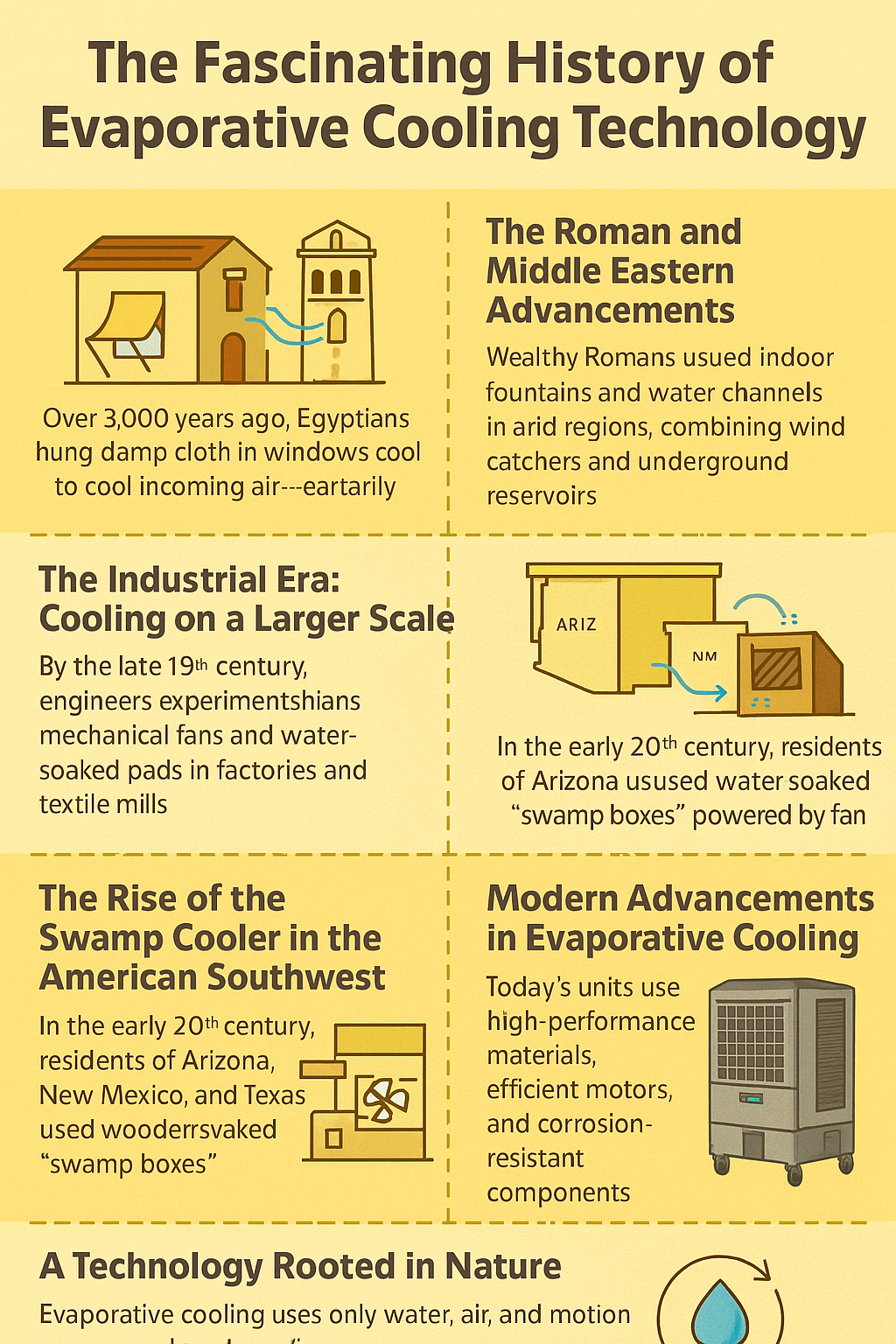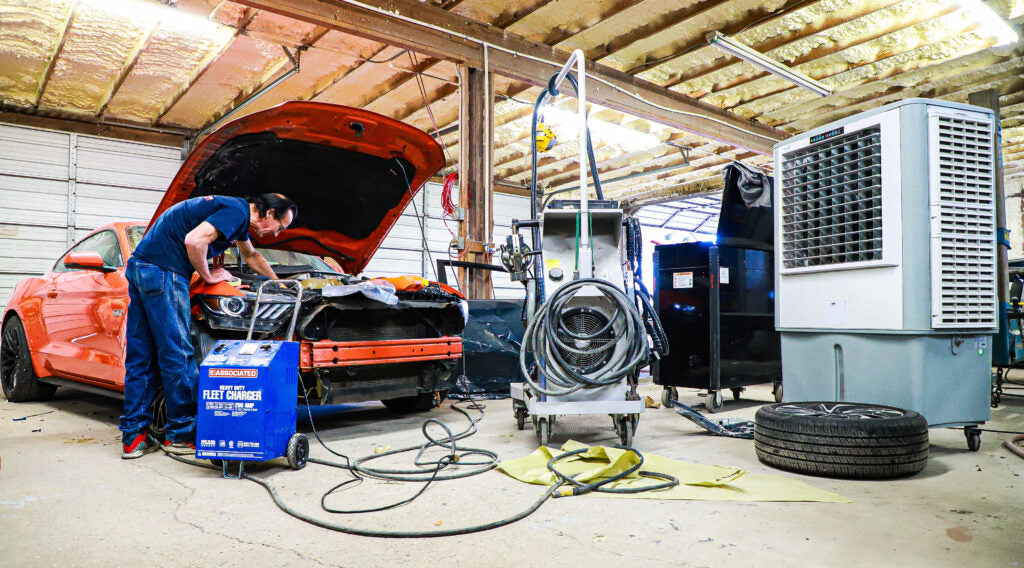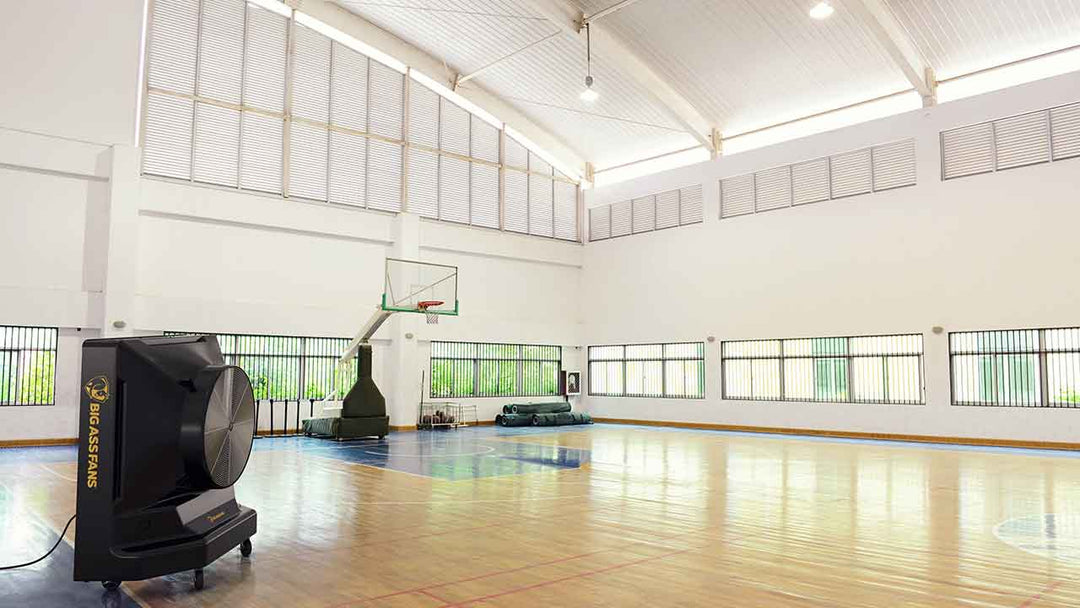14 Common Myths and Misconceptions About Evaporative Cooling

Evaporative cooling is an efficient and eco-friendly way to regulate indoor temperatures, especially in dry climates. However, like any technology, it’s surrounded by myths and misconceptions that can lead to misunderstandings and discourage its use. By addressing these common myths and misconceptions about evaporative cooling, you can gain a clearer and more informed understanding of how evaporative cooling works and why it’s right for your space!
Evaporative Cooling Doesn’t Work in Humid Climates
One of the most widespread misconceptions is that evaporative cooling is completely ineffective in areas with high humidity. While it’s true that these systems work best in dry environments, modern evaporative coolers have advanced features that allow them to function in moderately humid conditions.
Proper ventilation and strategic placement can significantly improve their efficiency, even in areas where humidity levels are higher than ideal. For example, using evaporative cooling in the early morning or evening, when humidity tends to be lower, can still provide noticeable comfort.
Evaporative Coolers Are Noisy
Many people assume these systems are loud and disruptive, but advances in technology and design have made modern models much quieter than older generations. The motors and fans operate smoothly and quietly. In fact, many evaporative coolers now produce less noise than a typical air conditioning unit, making them a suitable choice for all commercial and industrial spaces.
They Use Excessive Amounts of Water
It’s easy to believe that evaporative coolers waste water, but in reality, they are surprisingly efficient. Depending on the model, these systems often use far less water than you might expect, especially when compared to how much energy they save.
Additionally, the water consumption is negligible when you compare it to the energy and cost savings provided by the cooler. For areas with water scarcity concerns, many modern units recycle water or use minimal amounts without compromising cooling performance.

Evaporative Coolers Aren’t Energy-Efficient
This myth is one of the most persistent and malicious ones, but the truth is that evaporative coolers are among the most energy-efficient cooling solutions available. Traditional air conditioners use compressors and refrigerants that require a lot of energy.
Evaporative coolers, on the other hand, naturally cool the air through evaporation. They consume significantly less electricity, making them a cost-effective and environmentally friendly alternative that can lead to substantial savings on monthly energy bills.
Maintenance Is Complicated and Expensive
Another common misconception is that maintaining an evaporative cooler is a tedious and costly process. In reality, maintenance is relatively simple and low-cost. Regular cleaning of the pads and filters, checking water levels, and occasionally replacing worn-out parts are usually all it takes to keep the system running smoothly. These tasks are far less expensive and time-consuming compared to the upkeep required for traditional air conditioning systems, making evaporative coolers a practical choice for many businesses.
They Don’t Offer Adequate Cooling in Large Spaces
Contrary to popular belief, evaporative coolers are capable of cooling large areas effectively. Many models are specifically able to handle wide spaces, such as warehouses, factories, or expansive office spaces. The key is choosing the right size and capacity for your space. By selecting a unit that matches the square footage and layout of your area, you can ensure consistent cooling performance, even in larger spaces.
They Can’t Be Used Alongside Traditional Air Conditioners
Some believe that evaporative coolers and traditional air conditioners are incompatible, but the two can actually complement each other. For example, using an evaporative cooler during mild weather can reduce reliance on energy-intensive AC units, cutting down on electricity usage. This hybrid approach allows you to enjoy the benefits of both systems while optimizing energy efficiency and overall comfort.
Evaporative Cooling Produces Uncomfortable Damp Air
A properly functioning evaporative cooler does not create a humid or clammy environment. Instead, it adds just enough moisture to the air to produce a refreshing and natural cooling effect. When used in the right conditions with proper ventilation, evaporative coolers help maintain a pleasant indoor climate without making the air feel overly damp or sticky.
They Spread Allergens or Bacteria
This myth likely stems from concerns about using water in the cooling process. However, high-quality evaporative coolers will use filters and special cooling pads that improve air quality by trapping:
- Dust
- Pollen
- Numerous other airborne particles
With effective and regular maintenance, these systems can even reduce allergens and promote healthier indoor air, making them a great option for spaces with a lot of allergens and dust.

Evaporative Cooling Is Outdated Technology
While the concept of evaporative cooling has been around for centuries, today’s systems are far from outdated. Modern evaporative coolers incorporate cutting-edge features, such as smart controls, energy-saving modes, and advanced materials, that enhance performance and durability. These innovations ensure that evaporative cooling remains a relevant and effective solution for commercial and industrial cooling needs.
Only Homeowners Can Use Evaporative Coolers
It’s often assumed that evaporative cooling is only for residential use, but this couldn’t be further from the truth. These systems are widely utilized in commercial and industrial settings to cool large warehouses, offices, outdoor event spaces, and more. Their ability to provide reliable cooling at a fraction of the cost makes them a popular choice for businesses of all sizes.
They Aren't Environmentally Friendly
This misconception ignores the eco-friendly nature of evaporative cooling. Unlike traditional air conditioning systems that rely on chemical refrigerants and consume large amounts of electricity, evaporative coolers use a natural process that requires minimal energy. They also avoid harmful refrigerants, making them a much greener and more sustainable choice for cooling.
They’re Only Effective During the Day
Some people believe that evaporative coolers lose efficiency after sunset, but this is not the case. In fact, they often work even better at night, as the cooler evening temperatures enhance the effectiveness of the evaporation process. This ability at night means you can rely on an evaporative cooler to maintain a comfortable indoor climate around the clock.
Evaporative Cooling Is Too Expensive To Install
Another myth is that the installation cost of an evaporative cooler is prohibitively high. In reality, these systems are often more affordable to install than traditional air conditioning units. Additionally, their lower operating and maintenance costs make them a budget-friendly choice in the long run. By choosing the right model and installer, you can enjoy effective cooling without breaking the bank.
Dispelling these common myths and misconceptions about evaporative cooling will help you make the right informed decision about evaporative cooling. By understanding how these systems truly work, you can appreciate their benefits and determine if they align with your specific cooling needs.
It’s clear that evaporative coolers remain a practical, energy-efficient, and environmentally responsible solution for many businesses, and Swamp Coolers has the right coolers for you. With one of our Cajun cooling systems, you can get the comfort and savings you’ve always wanted. We have multiple options for spaces as small as 600 square feet, such as a waiting room at a doctor’s office or a meeting room, and options for areas larger than 2,500 square feet. So, whatever you need, our selection has you covered. With Swamp Coolers and our Cajun Kooling portable air coolers, getting a top-quality product can be easy!







